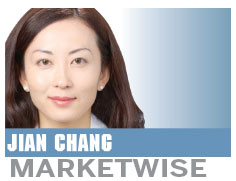External risks cloud mainland's economic outlook
Updated: 2011-08-18 09:09
By Jian Chang(HK Edition)
|
|||||||

Elevated inflation, a slowing domestic economy and escalating external risks have complicated the central government's challenge to balance inflation and growth objectives.
Recently released economic data for July show increased inflation and slowing but still resilient domestic and external demand. While Barclays maintains its 5.2 percent CPI inflation and 9.3 percent GDP growth forecasts for 2011, it views market turmoil and the situation in the US and EU pointing to downside risks.
The government's already delicate balance between inflation and growth is further complicated by the sharp deterioration in the external outlook. It is likely to adopt a flexible monetary policy to respond to the changing situation, and external developments will be the key to watch out for hints of policy direction in the coming months.
Given the still elevated inflation and capital inflow pressures, I don't believe monetary policy will be loosened in the near term, through either cuts in interest rates or lower reserve requirement ratios for banks.
The probability of another interest rate hike in the third quarter, however, is decreasing. There are already early signs that the government has started what could be viewed as "targeted easing" - ie, measures to support vulnerable sectors of the economy such as SME financing.
The country's CPI inflation rose to a 37-month high of 6.5 percent year-on-year (YoY) in July from 6.4 percent during the previous month. Inflation has likely peaked, though the elevated July figures and still significant underlying pressures suggest it will only climb down gradually.
The CPI inflation is likely to trend lower from August to around 6 percent and fall to around 5 percent by October. This is owing to lower food/pork prices as supply picks up, driven by government subsidies to encourage production, soft commodity prices, a slowing economy and base effects.
Meanwhile, July indicators showed a further moderation in industrial activity. The industrial production growth was a lower-than-expected 14 percent versus a 15.1 percent increase in June. The slowdown was broad-based and heavy industry IP (industrial production) growth (around 70 percent of the total) slowed to 14.5 percent YoY from 15.6 percent in June. The pace is expected to fslow further in the coming months and stabilize at around 13 percent, as domestic demand slows.
Investment growth slowed in July but continues to hold up despite the significant policy tightening. Fixed asset investment growth moderated to 25.4 percent YoY, from 25.6 percent in June. I expect slower but steady investment growth in the second half, supported by public housing and investment in water conservation projects.
Retail sales growth slowed more than expected in July to 17.2 percent YoY, while real growth slowed to 10.5 percent from 11.2 percent in June. While auto and property sales are unlikely to pick up significantly, and consumer confidence will continue to be weighed down by elevated inflation, consumption growth is expected to stay relatively stable in the second half, given household income growth and favorable policies.
On the external side, July trade growth was better than expected. Export growth increased to 20.4 percent YoY from 17.9 percent in June, and import growth rose to 22.9 percent from June's 19.3 percent. The trade data confirms the continued resilience of China's external and domestic demand. This, together with the rebound in the trade surplus, has likely contributed to the recent fast appreciation of the yuan versus the US dollar in spite of the market turmoil.
Elevated inflation, a wider trade surplus, as well as the crisis in the US/EU threatening the safety of the nation's reserves are likely behind the rapid appreciation of the yuan.
The author is vice-president and China economist at Barclays Capital Asia. The opinions expressed here are entirely her own.
(HK Edition 08/18/2011 page1)